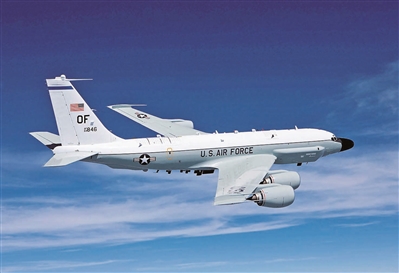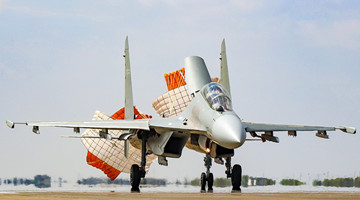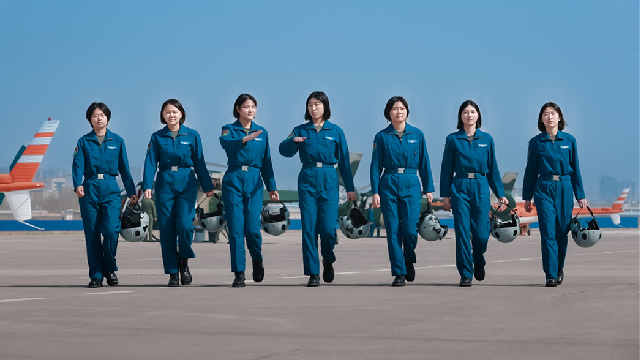
A US Air Force RC-135 reconnaissance aircraft
Affected by the disputes over the Intermediate-Range Nuclear Forces Treaty (INF Treaty), the evolution of the European military situation and the changes in the US domestic situation, the military competition between the US and Russia in Europe has been intensified since March. Through close-in surveillance, frontier deployment and weapon research and development, the two countries have continued to pressurize each other. The risk of military confrontation has increased, posing serious challenge for European security and stability.
Escalation of military confrontation
Recently, the US strategic weapon platforms have frequently shown strong presence on the Russian border. Russia showed no weakness and resolutely took strong countermeasures.
On March 16, Russia Today reported that according to the Russian military radar platform, a US Air Force B-52H strategic bomber flew over the Baltic Sea close to the Russian border at 4:25 p.m., local time on March 15, and conducted a simulated bombing run against Russian Navy’s Baltic Fleet base. One week later, a US Air Force RC-135 reconnaissance aircraft took off from Greece and reconnoitered the southern part of Crimea at at 2:25 p.m. on March 22, after flying over the Black Sea and Bulgarian airspace.
On March 11, the US Department of Defense announced that the US would no longer be restricted by the INF Treaty and would begin to manufacture land-based cruise missile components. On March 17, the Pentagon said that the US military planned to test one land-based cruise missile with a range of 1,000 kilometers in August and one medium-range ballistic missile with a range of 3,000 to 4,000 kilometers in November. Under the INF Treaty, both of the missiles would be prohibited to test.
On March 18, the Pentagon announced that it would spend around $1.4 billion to purchase 10,193 rockets for the US Army in the 2020 fiscal year. The number of purchased rockets increases by 26 percent compared with 8,101 in the 2019 fiscal year and by 47 percent compared with 6,936 in the 2018 fiscal year.
Two aspects of countermeasures taken by Russia
On the one hand, the Russian military has strengthened the deployment of frontier military forces. RIA Novosti reported on March 18 that Russia has deployed a modernized Tu-22M3 bomber in Crimea. “The bomber can easily break through the European air defense system and cover all areas of Europe.” Before the deployment of Tu-22M3 bomber, Russia has already stationed Su-27 and MiG-29 fighters, S-400 air defense system and K-300P shore-based anti-ship missiles and other advanced weapons in Crimea.
On the other hand, Russia has speeded up the deployment of “killer mace” weapons. Quoting US intelligence officials, US media reported that 20 test projectiles of the Kinzhal hypersonic missile were deployed at a training ground of the Russian military on March 22. The Russian Defense Minister Sergei Shoigu announced that the MiG-31 fighter crew equipped with the Kinzhal missile had conducted more than 380 air patrols in the Black Sea and the Caspian Sea. They have successfully completed tests under complex weather conditions and hit a car-sized target from 1,000 kilometers away. US media pointed out that the strategic deterrence of the Russian military in Europe will be greatly enhanced after the commission of Kinzhal missile in 2020.
Complex reasons for US-Russia confrontation
Since the end of the Cold War, the US and Russia (Soviet Union) have consistently scared each other in Europe, and even almost sparked conflict. Looking at the recent European security situation, US-Russian relations and relevant domestic conditions in the US, the reasons for this round of US-Russia military confrontation can be summarized as following.
First, dispute over the INF Treaty is an important cause. The US announcement on Feb. 1st regarding the decision to withdraw from the INF Treaty and start a six-month “waiting period” is an important trigger for this round of military game between US and Russia. As an important “stabilizer” of European security, the termination of the INF Treaty will be a nightmare for European countries. Russian Foreign Minister Sergey Lavrov said at the UN Conference on Disarmament in Geneva, Switzerland, if the US withdraws from the INF Treaty, it might trigger a new round of global arms race and even a nuclear war. That is to say, a key reason why Russia has accelerated the research and development of “killer mace” weapons such as Kinzhal missile is to prevent the US from testing or deploying cruise missiles or ballistic missiles prohibited by the INF Treaty in the Europe.
Second, the new development of the military situation in Europe is an important external cause. In recent years, the US has accelerated its strategic containment against Russia in Europe, deployed anti-missile forces in countries such as Romania, and increased the frequency of replacement of military personnel and weapons and equipment in the Europe. The US has frequently carried out large-scale joint drills with its allies and partners near the borders of Russia. Recently, Macedonia is on its way to become the 30th member of NATO, regardless of the Russian warning. NATO has achieved another success in its expansion. As the important “satellite country”of the Soviet Union during the Cold War, Poland however took a step forward towards a closer relationship with the US by requesting a permanent US military base in Poland. The US responded positively and announced that “more than 1,500 troops are streaming into Poland this week, as the first-time rapid deployment of the US Army to Europe since the end of the Cold War.” It looks like that the changes of the military situation in Europe were irretrievably compromised to the disadvantage of Russia. Therefore, Russia had to curb the US strategic containment attempt by strengthening the frontier military presence in areas such as Crimea.
Third, US President Donald Trump’s political calculations are important internal factors. In recent years, the US-Russia military confrontation has been normalized. The reason why this time has caused great concern from the outside world is because the US military surveillance is approaching too close. This has to do with Trump’s ‘shrewd’ political calculations. On the one hand, the “Russia gate” investigation has brought tremendous pressure on Trump. Demonstrating military strength to Russia helps to show Trump’s “anti-Russia” image. On the other hand, the Pentagon recently submitted a defense budget of $750 billion for the 2020 fiscal year, in which the European Deterrence Initiative (EDI) budget (which aims to strengthen the US military presence in Europe) was cut. The move is not to reduce the US strategic deterrence capability in Europe. Instead, the US aims to create “Russia, the enemy, at the gates” while “US stand-by” atmosphere, as to force its European allies to bow for the US’ help, paying up to five or six times higher protection fee.
“Confrontation without war” becomes a commonplace
Looking into the future, due to the deep-rooted structural contradictions, increasing potential conflicts, and current strong hostile sentiments, the military confrontation between the US and Russia in Europe is hard to halt in the short term, and the strategic competition is likely to be persistent. The two sides will continue to accelerate the development of strategic weapons, enhance the deployment of elite combat forces, increase the frequency of close-in surveillance and strengthen military cooperation and joint training with allies in order to create a more advantageous strategic environment and military situation in Europe. The future military presence in Europe might be more confrontational, the risk of military confrontation would continue to rise, and the security environment might deteriorate further.
Although the prospect of the security situation in Europe are not optimistic, the US and Russia should still try their best to avoid turning the “cold war” into the “hot war.” “Confrontation without war” will be the “new commonplace” for the future military confrontation between the US and Russia in Europe.
On the one hand, the large-scale strategic nuclear arsenal is the mainstay of the US-Russia strategic stability. The military confrontation and even the conflict between the two sides must be maintained within a controllable low intensity range. On the other hand, peace and stability in Europe are the fundamental strategic interests of the US and Russia. The aggressive military situation is to earn more “chips” for future arms control negotiations. The changes in the comprehensive strength contrast between the two sides and the new development of the European security landscape will lead to the “downsizing” of military confrontation between the two countries. The European countries will find new balance and stability in the great power competition in the future.









